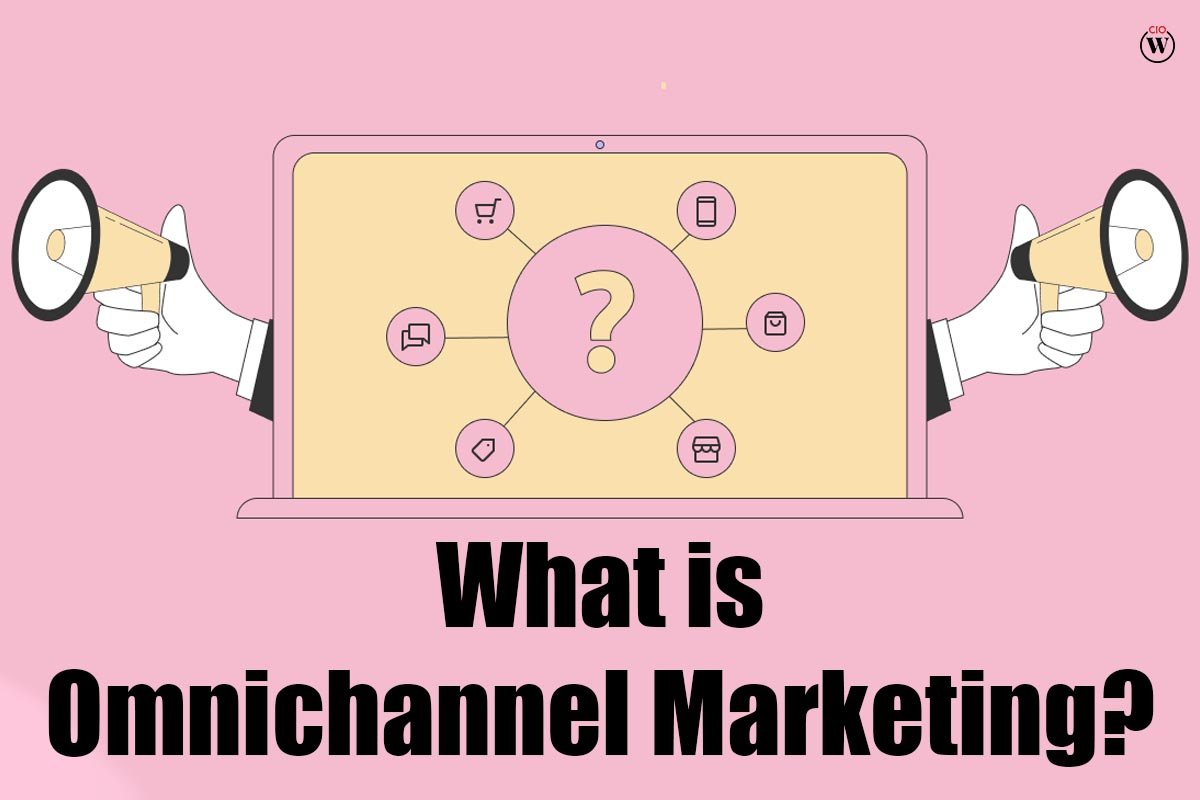Consider all of the many ways a customer may learn about a company nowadays. Users may utilize their smartphones to access a brand’s social media networks, such as Instagram and Facebook. They may also view a brand’s YouTube videos on a tablet. Users might also find a company’s website by putting a term into a desktop computer’s search engine.
A consistent, smooth user experience across all marketing platforms may assist individual customers to remain connected with a brand while creating confidence in it. Omnichannel marketing is a strategy that considers all marketing channels when choosing how to provide the greatest consumer experience. Rather than operating channels in silos, a unified approach applies to all marketing channels, even if they operate differently or target different consumers.
Omnichannel marketing, when done appropriately, may have a favorable influence on corporate performance. According to a 2021 Omnisend review of over 135,000 marketing initiatives, marketers that employed three or more channels in a campaign had a 494% higher order rate than those who relied on a single channel.
Effective omnichannel marketing may be the difference between a loyal, recurring client base and one that loses their business to the competition in a variety of sectors ranging from B2C to B2B firms.
Meaning of Omnichannel Marketing
Omnichannel marketing is concerned with the client, while multichannel marketing is concerned with developing particular marketing channels for each platform. An omnichannel strategy maps customer personas and examines the consumer’s journey with a brand across numerous platforms and devices. The brand then plans how to provide an outstanding customer experience throughout the buyer’s journey.
Expect customers to demand your attention everywhere your brand has a presence. Consumers may do the following across all channels and platforms:
Pose a query
Look for solutions to an issue.
Do you want to know what makes a brand unique?
It is critical to maintaining consistency in voice and tone, the quality of customer care delivered, and the information presented that represents a product or service. This is where an omnichannel marketing approach comes in handy.
Why Is Multi-Channel Marketing Necessary?
Omnichannel, or “Omni channel,” marketing is important because it may help you develop stronger relationships with the prospects and consumers you engage with. Consumers may begin to learn about and comprehend your brand. This might increase their expectations and outcomes with your company.
A 2021 Gartner analysis of 2,196 consumers revealed that when customers have a value-enhancing service experience, there are:
97% of customers are likely to spread the favorable word of mouth.
The consumer is 86% likely to spend more money.
Customer retention is 82% likely.
Churn, on the other hand, maybe severely influenced when the customer experience fails. According to a PwC study, even when Americans like a product or company:
After many poor encounters, 59% of people discontinue doing business with a firm.
With only one poor encounter, 17% of people leave.
Customization is important.

The experience should be smooth everywhere a client may locate your brand. It suggests that personalization is typically linked in.
Imagine a consumer who contacts a chatbot on a company website for assistance with a problem. The consumer then follows up with the company on Instagram. Rather than restarting the dialogue, the company answers with the most recent information. It is a multichannel experience.
Personalization has an impact on a company’s bottom line. According to McKinsey & Company data from 2021, when organizations fail to personalize, 76% of customers get disappointed. As compared to organizations that deliver average-level customization, companies that excel at personalization generate 40% more money from such operations.
Omnichannel Marketing Strategies Examples
Omnichannel marketing may refer to a company’s overall brand strategy, specific marketing efforts, or the complete customer journey experience.
Brand positioning
A set of brand standards and rules may help a company better it’s omnichannel marketing in terms of brand strategy. They may determine anything from the tone of a business’s writing to its color palette, to the typefaces and graphics the brand should emphasize and those they should avoid.
Consumers can identify a brand based on its consistent look and personality across all platforms, whether it’s a Twitter campaign or the company’s e-commerce website.
Campaigns for individual marketing
An omnichannel approach to individual marketing campaigns considers how each platform fits into the campaign and where consumers spend their time depending on their trip.
Take the case of a company launching a new product. On Facebook, they tease the announcement and give consumers a product discount coupon in return for signing up for an email subscription.

The company makes a YouTube explanation video that shows how to utilize the device. This is mentioned in the email notice and is added to the knowledge library of their mobile app. They give the same customer support contact information for all customers who have queries about how to utilize the product across all platforms.
In this manner, the Omnichannel Marketing campaign targets the consumer and their journey rather than concentrating just on a single platform or channel. During the campaign, the company can monitor how customers engage with the brand across many media. Then, utilize that information to guide your next omnichannel marketing effort.
The customer’s journey
Companies may use data analytics to better understand the customer journey by asking the following questions:
Which third-party websites send leads and consumers to the brand’s website?
What do most consumers do after reading a blog?
What do people do after browsing a product page?
What are they likely to do after seeing your website through social media?
The answers to these questions may help you increase the level of personalization you provide across all channels. This data may also assist you in providing more relevant information at each stage of the customer journey, resulting in a more seamless customer experience.
Six Omnichannel Marketing Tips;
It is critical for firms who wish to combine their marketing across numerous platforms to understand:
Who is the customer?
What people anticipate from each channel of your company
How their journey appears across all of your marketing mediums
1. Develop buyer personas
To get there, you’ll need to first establish buyer personas that identify the demographics and “day-in-the-life” of your consumer group. These personas should contain the following information:
These clients’ preferred channels
How they use each channel
What their movement looks like across numerous marketing platforms
2. Think about buyer platform utilization.
It helps you design client journeys for each of your created personas. Consider:
Which platforms do they utilize on a daily basis?
Where they spend most of their time.
What they typically do on each platform
They could, for example, read news on Twitter and look at stuff from individuals they follow on Instagram.
3. Create brand guidelines
The voice, tone, language, and imagery you utilize to unite your brand across all digital channels will be informed as you map the consumer and their journey. Establish brand standards if you haven’t already. Your Omnichannel Marketing team maintains a consistent brand presence across all channels.
4. Evaluate the pain areas and habits of your customers.
Consider the pain points that a lead or client can encounter along their journey. Evaluate how your company can provide proactive service across all channels in order to surpass consumer expectations and maintain high engagement.
Pick a CRM software that allows you to monitor individual customer activity across all channels. As a result, if a client contacts you through one channel, the CRM may display the most recent interaction you had, allowing you to customize your service.
5. Integrate with an analytics platform

Link your website to an analytics platform that integrates data from social media, email marketing, and other marketing platforms. Analyze how consumers behave on your branded websites, applications, and other platforms, as well as on other sites where you have a presence, such as social media and community forums like Reddit.
6. Offer cross-channel customer service
Ensure everywhere your organization has an online presence, you’re also prepared to give customer support to clients there. If you have a Twitch or Discord channel, or a Yelp page, for example, ensure that a customer representative is routinely checking in on those platforms and communicating with consumers who want to engage with the company.
Digital Marketing Success Depends on Omnichannel Marketing.
According to studies on personalization and the consumer experience, omnichannel marketing is the key to success. It ensures that the user experience is consistent and smooth throughout the consumer journey. By offering the same quality of service across all channels and concentrating on how the client interacts with the brand throughout the journey, you can strengthen connections with leads and customers.









